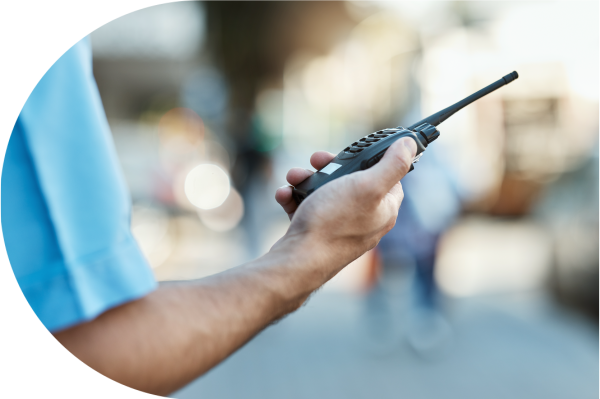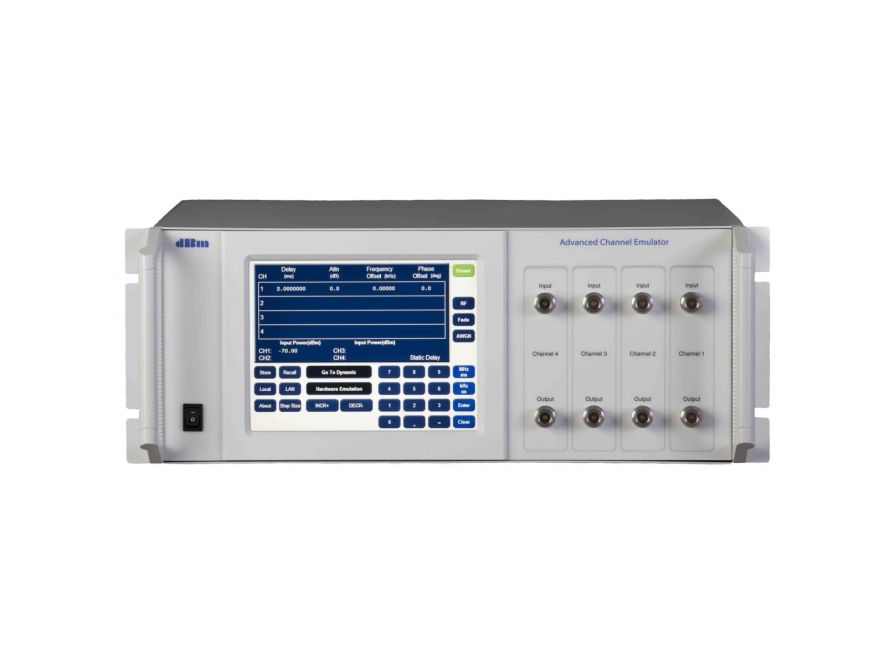5G NTN enable communication between 5G terrestrial or low-altitude devices and non-terrestrial satellites or airborne base stations. 5G NTN will augment existing 5G terrestrial systems, particularly in areas unsuitable for traditional base station deployment due to geographic challenges, such as open ocean or large, unpopulated desert regions. Emulating link impairments, such as noise, Doppler shift, latency, and multipath fading, with the ACE9600 enables the proper evaluation of electromagnetic and environmental effects on the signal path before satellite deployment.
Enabling 5G NTN advancements
As 5G non-terrestrial networks (NTN) extend global connectivity and transform our ability to communicate, advanced non-terrestrial RF channel emulation solutions will ensure these next-generation systems operate without fail.
Maury channel emulators replicate realistic link impairments not just for 5G NTN, but for a wide range of wireless systems including satellites, aircraft, UAVs, radios, and mobile devices.
Maury solutions support:
- Advanced emulation of complex link impairments, such as fading, Doppler, and delay.
- Comprehensive insight into how your system operates in interference-filled environments.
- Increased system resilience to real-world impairments.
Bring the dynamic post-deployment link conditions into the lab and stress-test your systems with the most advanced non-terrestrial RF channel emulator solution to date.

5G NTN


Link emulation
If you’re working on satellite communications, UAVs, aircraft systems, radios, or 5G handsets, our channel emulator is ideal for modeling the essential impairments—such as Doppler, delay, multipath fading, and additive white Gaussian noise (AWGN)—that your satellite system will experience once operational.
Whether in low-Earth orbit (LEO), medium-Earth orbit (MEO), or geostationary orbit (GEO), satellites experience specific conditions directly related to their orbital path. LEO satellites operate at high relative velocities, which cause high Doppler shift and frequent handovers. Operating at significant distances from Earth’s surface leads to long signal delays and high path loss for satellites in GEO. MEO satellites share intermediate characteristic between LEO and GEO, balancing the effects of Doppler shift, handovers, latency, and path loss. With the ACE9600, users can reproduce each satellite orbit’s unique aspects by generating time-varying propagation delay, carrier Doppler shift, attenuation, path loss, ionospheric scintillation, multipath fading, and troposcatter effects. This enables engineers to thoroughly test and optimize the performance of satellite communications systems designed for LEO, MEO, or GEO.
Civilian and military aircraft must function reliably and meet strict requirements all while operating in challenging environments. For example, traveling at fast speeds increases susceptibility to Doppler shift, varying altitudes causes dynamic delays and fluctuations in signal strength, and interference and various atmospheric effects can degrade signal quality. These conditions can significantly affect the transfer of critical, real-time data, including flight path management details, navigational instructions, immediate updates on aircraft positioning and weather, and air traffic control (ATC) information. The ACE9600 provides valuable insight into the effectiveness of aircraft communications by emulating various link impairments, such as time-varying propagation delay, Doppler shift, path loss, multipath fading, and atmospheric disturbances (i.e., ionospheric scintillation and troposcatter effects). Through aircraft link emulation, the ACE9600 ensures civilian and military aircraft meet required reliability, safety, and performance standards.
Unmanned aerial vehicles (UAVs) are dynamic airborne systems, operating at variable altitudes and speeds while establishing and maintaining communications with other aircraft or ground stations. The integrity of communications signals directly impacts a UAV’s ability to receive commands, transmit sensor data, and coordinate flight paths with nearby airborne systems, among other mission-critical tasks. Factors such as high mobility and variable flight behavior, however, presents unique challenges for UAVs to communicate and operate effectively while in the field. The ACE9600 can provide a realistic testing environment through comprehensive UAV link emulation. Simulated link impairments include carrier Doppler shift, chip rate shift, path loss, ionospheric scintillation, multipath fading, and troposcatter effects, all of which contribute to understanding, analyzing, and optimizing UAV performance under various operational conditions.
Radios are fundamental communications systems for various applications, including public safety, aviation, satellite, cellular networks, and tactical operations. Across all use-cases, challenges such as propagation delay, Doppler shift, path loss, atmospheric disturbance, and multipath fading inhibit effective transmit and receive operations. The ACE9600 enables accurate and thorough radio link emulation by generating time-varying delay, attenuation, carrier Doppler shift, phase shift, AWGN, multipath fading, and other critical impairments. Simulating various radio link effects offers insight into real-world performance while still in the lab, allowing engineers to identify potential faults and make informed adjustments to improve radio designs.
5G handsets are mobile phones or wireless devices that can connect to 5G cellular networks, which provide faster speeds, lower latency, and increased network capacity compared to previous generations. The communication link between the handset and cellular network often encounters various challenges, such as signal propagation delay, Doppler shift, chip rate shift, path loss, and multipath fading, which can affect the transmission, decoding, reception, strength, synchronization, and fidelity of 5G signals. By simulating these impairments with the ACE9600, engineers can optimize 5G handset designs to deliver reliable connectivity and performance in diverse operating environments.
Related Resources
02
SATGEN Software Demonstration
In this demonstration, learn how the Maury Microwave SATGEN real-time emulation software platform can configure orbit models for satellites, earth stations, and aircraft. Plus, get a look at how the ACE9600 advanced channel emulator performs satellite link emulation.
Latest News & Blogs
How Do Natural Effects & RF Impairments Impact Satellite Transmissions?
Satellite communications signals travel through environments filled with natural effects and impairments that can impact transmissions. For example, signals must contend with distortions introduced from various interfering sources. Free-space propagation…
Why Is Channel Emulation Key for Deploying 5G Non-terrestrial Networks Successfully?
Relying solely on traditional ground-based infrastructure has limitations, particularly when providing coverage to remote or underserved areas. 5G non-terrestrial networks (NTN) enhance the capabilities of terrestrial systems by integrating non-terrestrial…
Want to Optimize Satellite Communications Testing? Join Us at Booth #2112 during SATELLITE 2024
Hosted in Washington, DC, SATELLITE 2024 is a premiere conference for the global space and satellite communities to discuss the latest innovations, products, and services. In this blog post, learn what attendees can…
Maury Microwave Announces Acquisition of dBmCorp
Maury Microwave, Inc. (“Maury” or the “Company”), a pioneering leader in RF calibration, measurement, and modeling solutions backed by Artemis Capital Partners (“Artemis”), announced today that it has completed the…


